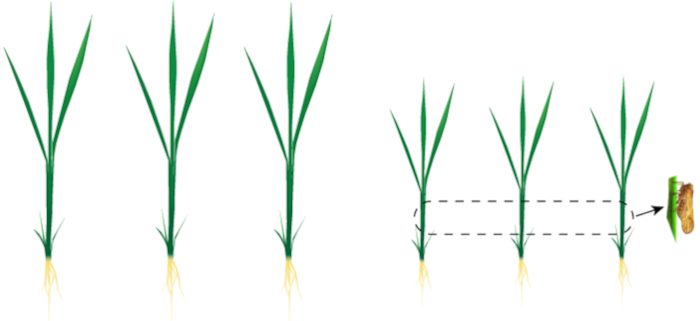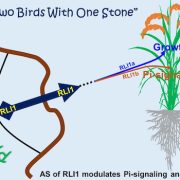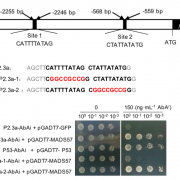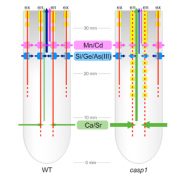Jasmonate-regulated gibberellin catabolism slows rice growth during herbivory
Jin et al. identify a mechanism for rice growth suppression during herbivore attack.
https://doi.org/10.1093/plcell/koad191
Gaochen Jin1, Jinfeng Qi2, Hongyue Zu1, Shuting Liu1, Jonathan Gershenzon3, Yonggen Lou1, Ian T. Baldwin4, Ran Li1,*
1State Key Laboratory of Rice Biology, Ministry of Agriculture Key Lab of Molecular Biology of Crop Pathogens and Insects, Key Laboratory of Biology of Crop Pathogens and Insects of Zhejiang Province, Institute of Insect Sciences, Zhejiang University, Hangzhou 310058, China
2Department of Economic Plants and Biotechnology, Yunnan Key Laboratory for Wild Plant Resources, Kunming Institute of Botany, Chinese Academy of Sciences, Kunming 650201, China
3Department of Biochemistry, Max Planck Institute for Chemical Ecology, Jena 07745, Germany
4Department of Molecular Ecology, Max Planck Institute for Chemical Ecology, Jena 07745, Germany
Background: In nature, plants frequently encounter a diverse array of insect herbivores during their lifetime. When attacked, plants activate chemical defenses, which consume resources required for plant fitness. Consequently, growth reduction is commonly associated with herbivore attack and defense activation, known as the growth-defense trade-off. The underlying mechanisms of this trade-off are commonly attributed to crosstalk among phytohormones. Jasmonate (JA) and gibberellin (GA) are defense- and growth-related phytohormones, respectively. JA signaling plays central roles in plant–herbivore interactions.
Questions: Does GA signaling participate in herbivore-elicited plant growth suppression? What is the molecular mechanism of JA–GA crosstalk in this process?
Findings: Brown planthopper (BPH) attack restricts plant growth and activates bioactive GA catabolism in rice (Oryza sativa). Two GA catabolism genes, GA2ox3 and GA2ox7, contribute to BPH-elicited growth restriction and are upregulated by JA signaling. The core JA-responsive transcription factor MYC2 binds to the promoters of GA2ox3 and GA2ox7 to regulate their expression. Thus, the MYC2–GA2ox module regulates the growth-defense trade-off when rice is attacked by BPH.
Next steps: We will explore if other phytohormones are involved in herbivore-elicited plant growth restriction and study how they interact with JA.
Gaochen Jin, Jinfeng Qi, Hongyue Zu, Shuting Liu, Jonathan Gershenzon, Yonggen Lou, Ian T. Baldwin, Ran Li. (2023). Jasmonate-mediated gibberellin catabolism constrains growth during herbivore attack in rice. https://doi.org/10.1093/plcell/koad191










